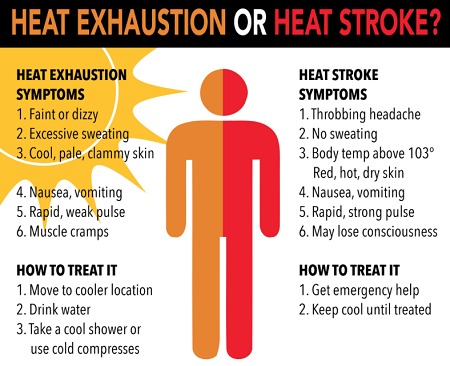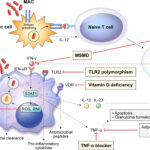Muscle cramps linked to heat exhaustion, commonly referred to as heat cramps, are painful, involuntary muscle spasms occurring during or after intense physical activity in hot conditions. They typically affect major muscle groups such as the calves, thighs, and shoulders. These cramps signal early-stage heat illness and indicate electrolyte imbalance due to excessive sweating.
Prompt recognition and prevention are critical, as untreated cramps can escalate into severe heat exhaustion or even heat stroke.

Mechanism of Heat-Induced Muscle Cramps
Fluid and Electrolyte Loss
Heat exposure triggers heavy sweating, leading to the loss of water, sodium, potassium, calcium, and magnesium. These electrolytes are essential for proper muscle contraction. An imbalance impairs neuromuscular control, causing painful cramping.
Increased Risk During Prolonged Activity
Laborers, athletes, and outdoor workers engaging in prolonged exertion in high humidity or temperatures face an elevated risk. Cramps often emerge after several hours of physical activity and are aggravated by inadequate fluid intake or poor conditioning.
Hydration Strategies to Prevent Heat Cramps
Maintain Adequate Fluid Intake
Proper hydration begins before physical activity:
- Pre-activity: Consume 500–600 ml of water 2–3 hours before exercise.
- During activity: Drink 200–300 ml every 15–20 minutes.
- Post-activity: Rehydrate with fluids containing electrolytes.
Thirst is not a reliable indicator of dehydration. A clear or light-yellow urine color is a better measure of hydration status.
Electrolyte Replacement
Water alone may not suffice. Electrolyte replacement drinks containing sodium and potassium help restore balance and prevent muscle spasms.
- Sodium: Helps retain fluids and supports nerve and muscle function.
- Potassium: Prevents muscle fatigue and spasms.
Natural alternatives include coconut water, bananas, and oral rehydration solutions (ORS).
Nutritional Interventions for Cramp Prevention
Increase Intake of Key Minerals
Consuming foods rich in essential minerals can reduce susceptibility to heat-induced cramps:
- Potassium: Bananas, oranges, sweet potatoes
- Magnesium: Spinach, almonds, black beans
- Calcium: Dairy products, leafy greens
- Sodium: Natural salt or broths (in moderation)
Athletes should consider structured meal plans with sufficient mineral content, especially during heat waves or training periods.
Pre-Exercise Nutrition
Avoid training or working in the heat on an empty stomach. A small, balanced meal 1–2 hours before exertion helps stabilize blood sugar and prevent electrolyte depletion.
Clothing, Scheduling, and Environmental Considerations
Wear Heat-Appropriate Clothing
Choose breathable, moisture-wicking, and light-colored clothing to enhance heat dissipation. Avoid tight or dark fabrics that trap heat and limit sweat evaporation.
Schedule Activities Wisely
- Avoid peak heat hours: Reschedule strenuous activity to early morning or evening.
- Take regular breaks: Short rest intervals every 30–60 minutes in shaded or cool areas reduce cumulative heat load.
Conditioning and Acclimatization
Gradual Heat Acclimatization
New workers or athletes should gradually increase heat exposure over 7–14 days to allow the body to adapt. This includes:
- Enhanced sweat response
- Improved cardiovascular function
- Efficient electrolyte conservation
Acclimatization should involve 60–90 minutes of moderate exertion in heat daily, with supervision and hydration.
Proper Physical Conditioning
Unconditioned individuals are at higher risk for cramps. Implementing endurance and strength training reduces fatigue and enhances thermal regulation, both of which prevent cramping episodes.
Recognizing Early Signs and Taking Immediate Action
Early Warning Symptoms
Watch for:
- Mild cramps in legs or abdomen
- Profuse sweating
- Fatigue or lightheadedness
These are precursors to more serious conditions like heat exhaustion or heat stroke.
First Response Measures
- Stop activity immediately
- Move to a shaded or cool area
- Rehydrate with electrolyte-rich fluids
- Stretch and massage the affected muscles
If symptoms persist or worsen, seek medical attention to prevent complications.
Protective Policies for High-Risk Workplaces
Heat Illness Prevention Programs
Employers must establish structured programs that include:
- Scheduled hydration breaks
- Access to shaded or air-conditioned rest areas
- Training on recognizing symptoms of heat illness
- Buddy systems for monitoring workers
Use of Heat Index Guidelines
The Wet Bulb Globe Temperature (WBGT) or local heat index should guide workload intensity and break frequency. OSHA and NIOSH provide thresholds and safety recommendations for high-heat environments.
Special Considerations for Vulnerable Populations
Youth Athletes and the Elderly
Children and seniors are particularly vulnerable to heat-related muscle cramps due to:
- Lower sweat rates
- Inefficient thermoregulation
- Chronic medications (e.g., diuretics) affecting fluid balance
Caregivers and coaches should ensure modified activity schedules and vigilant monitoring.
Preventing muscle cramps associated with heat exhaustion requires a proactive, multidimensional strategy. Emphasis on hydration, balanced electrolyte intake, heat acclimatization, and activity planning significantly reduces risk. By prioritizing education, environmental modifications, and physiological preparedness, we can safeguard individuals from the dangers of heat-induced muscle cramps and related illnesses.

